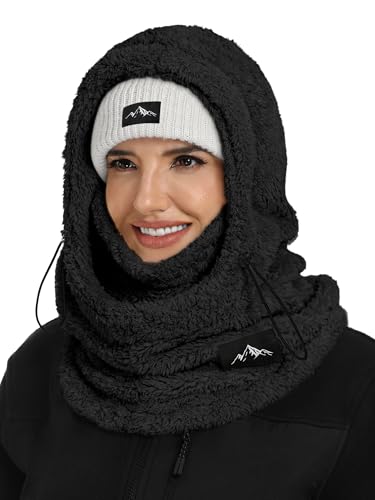Snowboarding is an incredible way to enjoy the slopes but it also demands a lot from your body. Whether you’re a beginner or a seasoned rider you’ll want to keep your muscles flexible and ready for action. Stretching before and after your ride can help prevent injuries and improve your performance.

You don’t need to spend hours on stretching to feel the benefits. Just a few targeted moves can make a big difference in how you feel on your board. Let’s explore some of the best stretches that will keep you balanced agile and ready to carve down the mountain with confidence.
Importance of Stretching for Snowboarders
Stretching plays a critical role in your snowboarding routine. It prepares your body, sharpens your focus, and helps you push your limits on the slopes with confidence.
Benefits of Stretching Before Snowboarding
Stretching warms up your muscles, increasing blood flow and flexibility. It enhances your balance and coordination, which are vital for navigating tricky terrain. Dynamic stretches activate key muscle groups—like your legs, hips, and core—allowing you to respond quickly to changes in snow conditions. Improved flexibility reduces muscle stiffness, making your movements smoother and your turns sharper. You gain better control and extend your endurance, letting you ski or ride longer without fatigue.
Preventing Injuries on the Slopes
Stretching decreases the risk of common snowboarding injuries such as strains, sprains, and muscle tears. Targeted stretches loosen tight muscles and joints, making them less prone to sudden stress or impact. Consistent stretching lowers your chances of falls by increasing agility and reaction time. It helps protect your knees, ankles, and lower back—areas most vulnerable during rides. Prioritizing stretching builds resilience in your body, so you spend more time enjoying fresh powder instead of sidelined with injuries.
Key Muscle Groups to Stretch for Snowboarding
Preparing your body for snowboarding means focusing on muscle groups that support balance, power, and control on the board. Targeting these areas reduces injury risk and improves your performance on the slopes.
Lower Body Muscles
Your legs absorb most of the impact during snowboarding. Concentrate on stretching the quadriceps, hamstrings, calves, and glutes to maintain flexibility and prevent strains. Tight quads limit knee movement, affecting your turns and stops, while flexible hamstrings improve balance. Calf stretches enhance your ankle mobility, crucial for edging and carving. Don’t skip the glutes, as strong, stretched glute muscles stabilize your hips for better control and endurance.
Core Muscles
Your core powers every movement and keeps you steady on uneven terrain. Stretching your abdominals, obliques, and lower back loosens tightness that can hinder rotation and balance. A flexible core helps you absorb shocks from jumps and landings, plus it supports your posture to avoid fatigue during long runs. Gentle twists and extensions open up your torso, allowing your upper and lower body to move fluidly together.
Upper Body and Shoulders
While snowboarding focuses on your lower body, your upper body aids in balance and recovery from falls. Stretch your shoulders, chest, and upper back to maintain range of motion and reduce stiffness. Flexible shoulders help when you reach out to break a fall or shift your weight during turns. Opening your chest counteracts the hunched posture snowboarding can cause, improving your breathing and overall comfort on the slopes.
Best Stretches for Snowboarders
Improving your snowboarding starts with the right stretches to boost flexibility, balance, and muscle readiness. Focus on dynamic, static, and balance stretches that target key muscle groups for the best performance on the slopes.
Dynamic Stretches to Warm Up
Start your routine with dynamic stretches that get your blood flowing and activate muscles. Leg swings engage your hamstrings and hip flexors, prepping your lower body for quick movements. Walking lunges loosen your quads and glutes, essential for maintaining control during turns. Arm circles open up your shoulders, improving upper body mobility for balance and falls. These movements prime your muscles without causing fatigue, allowing you to respond faster to changes in terrain and snow conditions.
Static Stretches for Flexibility
After warming up, hold static stretches to lengthen muscles and improve overall flexibility. A seated hamstring stretch increases mobility in the back of your legs, reducing injury risk from sudden stops or landings. The butterfly stretch targets your inner thighs and hips, helping with crouching and carving. Calf stretches prevent tightness that can affect ankle movement and board control. Hold each stretch for 20 to 30 seconds to allow muscles to relax deeply and prepare for longer runs.
Balance and Stability Stretches
Enhance your balance and core stability with stretches that engage multiple muscle groups simultaneously. The standing quad stretch helps maintain leg muscle elasticity and supports knee stability. Plank variations activate your abdominals and lower back, crucial for staying upright on uneven terrain. Side lunges improve hip flexibility and leg strength, promoting better control in sharp turns. Including these stretches in your routine sharpens your proprioception and reaction time, translating to smoother rides and fewer falls.
Tips for Effective Stretching Routine
Creating a stretching routine that fits your snowboarding session helps you stay flexible, balanced, and injury-free. Following key guidelines makes your stretching more effective and boosts your performance on the slopes.
When to Stretch During Your Snowboarding Session
Start with dynamic stretches before you hit the slopes to warm up muscles and joints. These moves, like leg swings and walking lunges, increase blood flow and prepare your body for quick, agile movements. After snowboarding, switch to static stretches focused on the hamstrings, quads, and shoulders to improve flexibility and aid muscle recovery. Include a brief cool-down stretch session within 10 minutes after finishing to prevent stiffness. Avoid static stretches before riding since cold muscles don’t respond well to deep holds and risk strain.
Common Stretching Mistakes to Avoid
Skip bouncing or jerky movements during stretches because they can cause muscle tears. Avoid holding static stretches for too long before riding as it reduces muscle power temporarily. Don’t stretch cold muscles without proper warm-up since it increases injury risk. Neglecting balance exercises limits your overall stability, so include planks or standing balance stretches. Finally, don’t rush your routine—pausing for 20 to 30 seconds per stretch lets muscles respond effectively.
Conclusion
Taking the time to stretch before and after snowboarding can make a big difference in how you feel on the slopes. It’s not just about preventing injuries but also about enhancing your control and confidence while riding.
By making stretching a regular part of your routine, you’re setting yourself up for better performance and longer sessions without discomfort. Your body will thank you with improved flexibility, balance, and strength that translate into smoother, more enjoyable rides.










